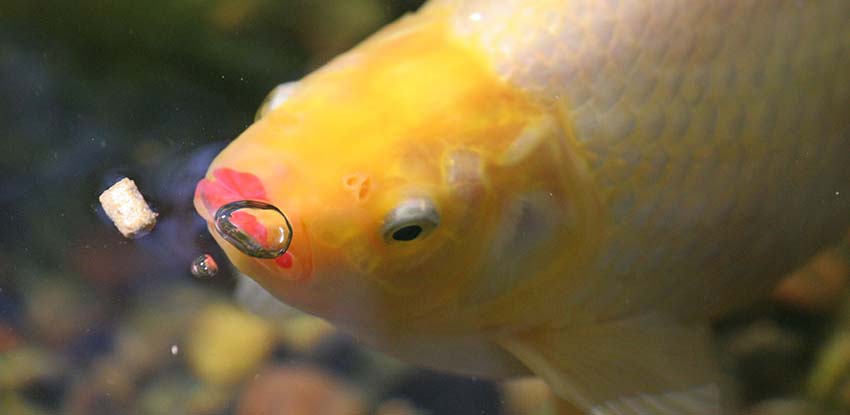You love your finned friends and can’t wait to see them swimming about after the winter thaw. While you’re dreaming of summer days by the pond, start thinking about your fish and taking measures to ensure they remain healthy throughout the year. Most fish issues can be avoided by following a few simple, preventative measures.
1. Understand Water Quality
The majority of issues with fish are caused by poor water quality. Make sure that the fish population is under control and not over-crowded. A general rule of thumb for pond sticking is to ensure you have no more than ten inches of fish (in length) for every 100 gallons of water in your pond. So if your pond is 1000 gallons, you can have a total of 100 inches of fish. You should balance your fish population with a variety of pond plants. Your plants will absorb fish waste as fertilizer and will starve algae of this fertilizer.
Beneficial bacteria should be added to your pond on a regular basis to help keep it balanced. Consider adding the Aquascape Automatic Dosing System, an electronically operated dispenser automatically releases the proper dose of water treatments for your pond.
2. Buy Your Fish from a Responsible Retailer
Never buy sick fish and if possible, quarantine new fish for a few days before adding them to your pond. Always ask how long the retailer has had the fish. If they have just received them, ask the retailer to hold the fish for a few days to make sure the fish recovers from stress related to transport and new water chemistry. You can read our 10 tips for buying fish to help you make the right choices.
3. Keep a Close Eye on Your Fish
Watching your fish is one of the great pleasures in Living the Aquascape Lifestyle™! If you notice any signs of disease or unusual behavior, refer to our fish treatments page which includes a handy chart for identifying and treating the most common pond fish issues. You can always consult the store or garden center where you purchased the fish, or visit our favorite koi vet’s web page for even more information.
4. Test Your Water
Test your water if you suspect there might be a quality issue. The level of pH can affect your fish in an adverse manner. But if you’re consistently adding beneficial bacteria, have proper pond filtration, and a good balance of fish and plants for the size of your pond, you should rarely have issues. Keep in mind that outside factors like lawn chemicals can leach into your pond and cause problems. It’s best not to apply chemicals to plants or grass near your pond.

5. Feed Your Fish a High-Quality Food
Feeding high-quality fish food will not affect water quality and will ensure that your fish are getting all the vitamins and nutrients they need to maintain proper health. Be careful not to overfeed your fish as uneaten fish food will decay and can cause an imbalance in pond water. Feed your fish no more than they can eat in five minutes. In the summer, you can feed them up to three times per day. In cooler temperatures, feed them only once – and stop feeding your fish altogether when pond water temperature drops below fifty degrees.
Prevention is the best cure for your finned friends! The easiest way to avoid disease problems is to maintain optimum water conditions. Feeding a quality diet and adding beneficial bacteria on a regular basis helps maintain a balanced ecosystem. Disease problems must be addressed in the early stages to be successful. By following these simple tips you’ll enjoy seeing your pond fish swim happily and healthily throughout the pond season!

